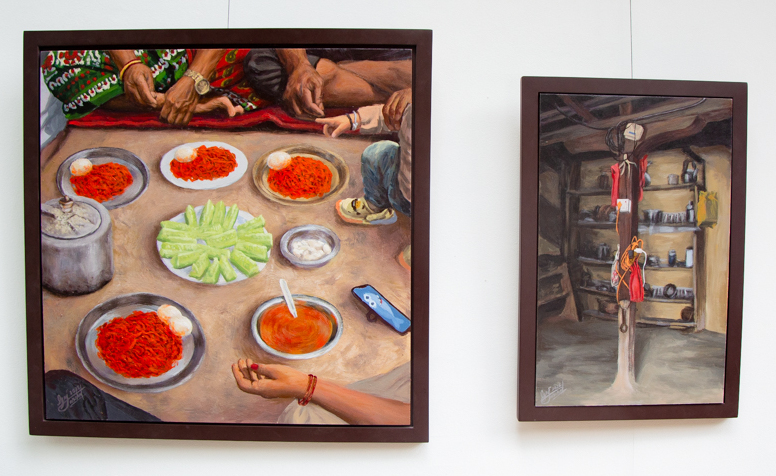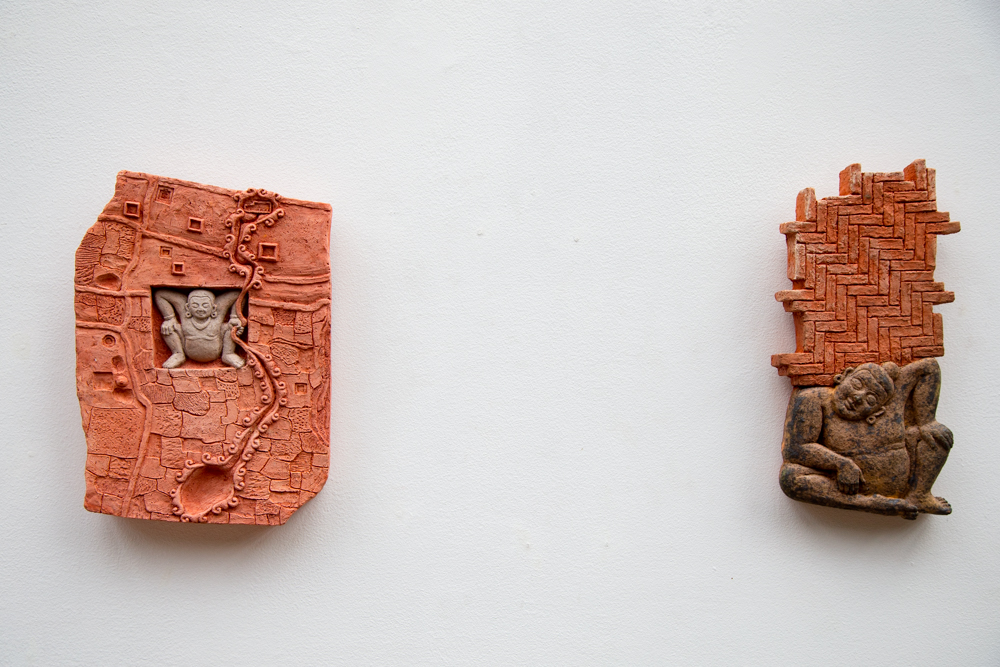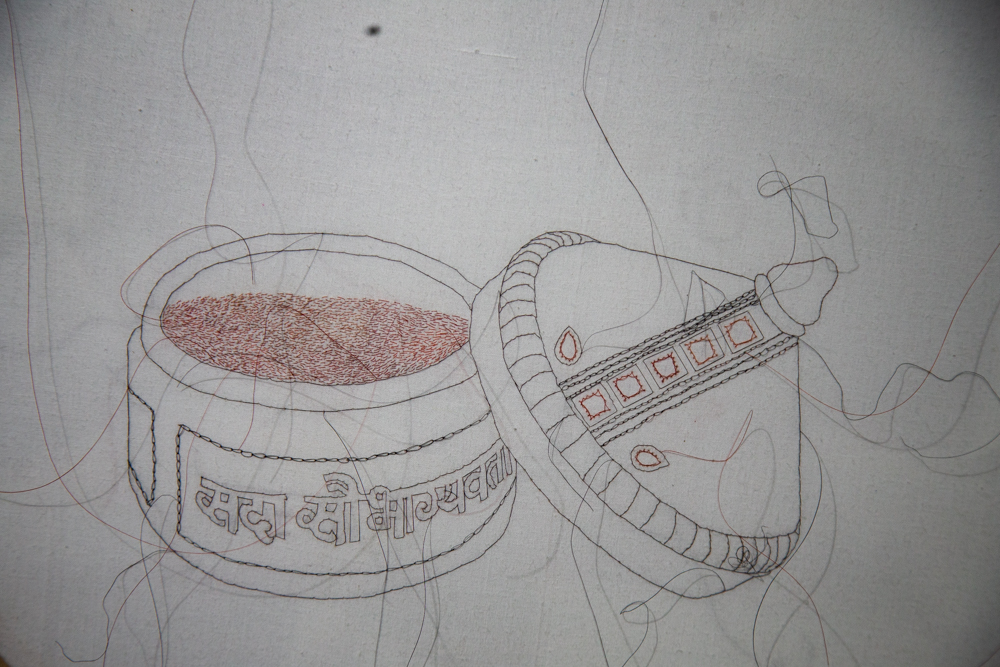An ode to the ordinary
Ten artists incorporate the familiar and the everyday into fine artSeldom do we see the smaller things, read between the lines, and realise that the little, fleeting moments are what shape our realities.
As we trace the light & dust, Haru Art Collective’s first group exhibition at Dalai-la Art Space revisits the value of these moments. Through the works of ten artists, the exhibition details our everyday, ordinary lives, making viewers relate, reflect, and bask in nostalgia.
One such piece is Moulik Limbu’s यादहरु सपना जस्तो लाग्छ, a dreamy blue landscape rendered in watercolor and gouache where birds and animals emerge subtly through still, royal-azure leaves.
As children, Limbu would stay up late with his brother, imagining fantastical creatures from the shadows outside their window, but at dawn, they would discover they were just leaves. Those quiet nights formed lasting memories that continue to tug at Limbu’s heart which he now preserves in his art.
Nischal Gurung’s Familiar Echoes captures the soft emotions of togetherness. Whether it is a person or familiar household objects we often overlook, they stay with us. In काक्रा र करेन्ट, the warmth of huddling together for a meal is carefully portrayed, highlighting how closeness often unfolds in the most mundane of moments.

In another piece, Anil Nepali’s work explores the haziness of distant memories. What seems like a normal painting from afar becomes increasingly blurred up close, much like how traffic lights lose clarity when seen through misty eyes.
This visual metaphor mirrors Nepali’s own experience of fading recollections from home which he reconstructs through pixelated squares and muted monochrome tones. The result is a powerful reflection on the fragile, fading nature of memory.
Viewers will see the attempt to reconnect with ancestral roots and traditional practices. The Arrival of Bun-Dyo by Kabir Kayastha, depicts the rain god Bunga Dyo during the Rato Maytsendranath Jatra. Meanwhile, Shrayam Shakya explores his lineage's deep connection with land and water in his piece, From the Ground.
“The oral traditions and stories of my ancestors become the remnants of the land and the knowledge that existed,” he tells us. At the centre of his exploration is the Yaksha – a nature spirit that embodies land and governs the essence of water. For Shakya, the Yaksha is not just a mythological being but also a symbol of ancestry.

Terracotta, the material he uses, reinforces this rootedness. “It is used in the architecture of hitis and is connected to the land, so it carries the essence of the theme.” As oral histories and traditions continue to fade, Shakya believes art becomes a vital archive.
Jyotsna Udas explores themes of femininity in her work. She says, “In my work, I embroider objects tied to femininity – those that adorn, restrain, and define.”
Using delicate strands of her own and her family’s hair, she weaves silent but powerful stories of inherited expectations, unspoken rules, and the confined spaces women are told to occupy -- a quiet testament to the strength and complexity of feminine energy.
“I cut my hair short every once in a while. It makes me feel free, free from all the burdens, but I get scolded by people at home when I do, or when I dye it,” she tells us. “Long hair is still seen as the beauty standard. Hair colour is taboo. People stare. Women become self-conscious. And when people can judge just based on something as personal as hair, it makes me wonder – how much more do we have to hear in life?”

Sadishree Thapa’s A Room that Waits explores the subtle yet profound difference in a house that comes with the presence and absence of a person. When the person is there, it feels like home, otherwise, it is hollow. ‘A room waits, for the warmth of a presence, for the sound that you said were home,’ reads the artist's profound accompanying note.
Places Where Dust Settles by Preeti Duwal captures the quiet beauty of everyday household objects, how they gather dust and the silent stories. Rojan Ghimire explores offerings and the subtle traces of life and birth, while Raunak Karanjit’s cyanotype work reflects on memory, identity, and the fading presence of a once-familiar marigold.
The artists weave together objects, places, life, and memory, into layered stories shaped by our daily rhythms and reflections, and transform the familiar into the extraordinary.
As we trace the light & dust
Till July 30
11am-7pm
Dalai-la Art Space, Thamel




